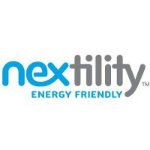“You can’t manage what you don’t measure.” This expression has become one of the more frequently used clichés in the energy management and sustainability industry. It’s right up there next to “move the needle” and “solar power is freaking hot!” And although clichés can be overused, when it comes to benchmarking, it can’t be said enough. Benchmarking is the single most important thing you can do to better manage your energy, water, and waste usage. The simple exercise of benchmarking allows you to identify consumption trends and anomalies, compare your usage to neighbors and averages, discover usage areas needing attention, measure actual savings instead of estimated savings, and so much more. For such a simple practice, it can have a tremendous impact. And chances are, energy benchmarking is the single most important thing that you could be doing to better manage your utilities.
Set a baseline:
Think of the baseline like your control group. It allows you to know your usage and cost for a typical year. It’s also what all progress will be compared to as you make improvements around your space. Simply put, setting a baseline involves recording a period of data that is representative of your current conditions.
- What should we be measuring? If you are spending money on it, then you want to set a baseline for it. Take a look at your monthly bills and see what type of utilities you pay for each month. For most businesses, monthly utilities will include electricity, natural gas, water, and waste removal.
- What units or metrics do we need to track? Consumption and cost. You want to track how much was consumed and how much was spent for that consumption. For example, if we’re looking at electricity, you would want to measure the number of kWh consumed and how much it cost. Anything else other than those two metrics is an added bonus (e.g. peak demand (kW), degree days, etc.).
- How long of a period do we need for the baseline? 12 months. This will account for seasonal changes and trends. However, be sure that the 12 months selected is representative of your existing conditions. For example, don’t select a 12 month period where you expanded your place of business by 700 square feet of space or added four additional refrigerators.
- What if we’re missing a couple months of data? If you’re missing a month, don’t stress about it. Estimate the missing month based on the surrounding months. Your baseline doesn’t have to be precise to the kWh, just a good representation.
- Where can I find this data? Everything you need is on your monthly utility bill. There are various ways of making the collection process a bit easier, depending on your utility provider. If your utility provides you with an online account, you can most likely logon and pull up historical bills with one click. If you don’t have an online account, you can simply set up a spreadsheet and record each month’s usage using your paper bills.
Tools for benchmarking:

EPA’s ENERGY STAR Portfolio Manager benchmarking tool
The EPA has developed the most widely adopted benchmarking tool in the industry called ENERGY STAR Portfolio Manager (and it’s free!). The tool is simple to use and allows you to create a profile with any number of electric, natural gas, and water meters for your building or space. There are countless training webinars and how-to-guides on the internet to show you how to use the tool. In a nutshell, you login to Portfolio Manager each month and update your recent month of utilities. The tool will record each month and provide you with various metrics to compare different periods of time.
If using a web-based tool sounds like too much effort, a simple Excel spreadsheet works pretty well too. For each utility, record each month’s consumption and cost as you get the bill. You will lose a lot of the automated comparison tools that you’ll get with Portfolio Manager, but depending on your Excel skills, you can set up graphs and embedded calculations to compare various periods automatically.
Your baseline is a diagnostic tool:
Once you have enough data for a baseline, you can begin to answer some important questions: how much water do we use in a typical year, how much are we spending on utilities each year, how much does waste removal add up to each year, etc. And more importantly you can identify trends and anomalies that need attention. Why are we spending so much money on electricity in the winter when our heating is supplied by natural gas? Now that you can identify these issues, you can further investigate areas needing attention and begin to develop strategies for lowering your expenses.
Benchmarking and beyond:
Benchmarking is a never-ending exercise, kind of like…well, exercising. It’s only as useful as it is current. With that said, you should record each month’s utility data as you receive it. If you get in the habit of recording the information as you get it, the act will become part of your regular routine and almost second-nature. As you record your data each month, begin to pay attention to what the numbers mean.
- Question your usage each month: Is this month higher or lower than this time last year? What has changed since then?
- Set goals and targets: Once you have a baseline, you can begin to set SMART goals for energy reductions and understand the financial impact that progress can have.
- Track your progress: As you make changes and improvements, keep track of the date that those changes were made so that you can see the difference in your bills.
- Engage others: Share benchmarking information with coworkers and help them understand what the numbers mean. The more aware others are about benchmarking, the more likely they are to be aware of their behaviors and the effect they have on the numbers.
Benchmarking shines a light on something that can’t otherwise be seen. It makes energy, water, and waste management measurable. And when we can measure it, we can manage it. And when we can manage it, we can make a real impact.






